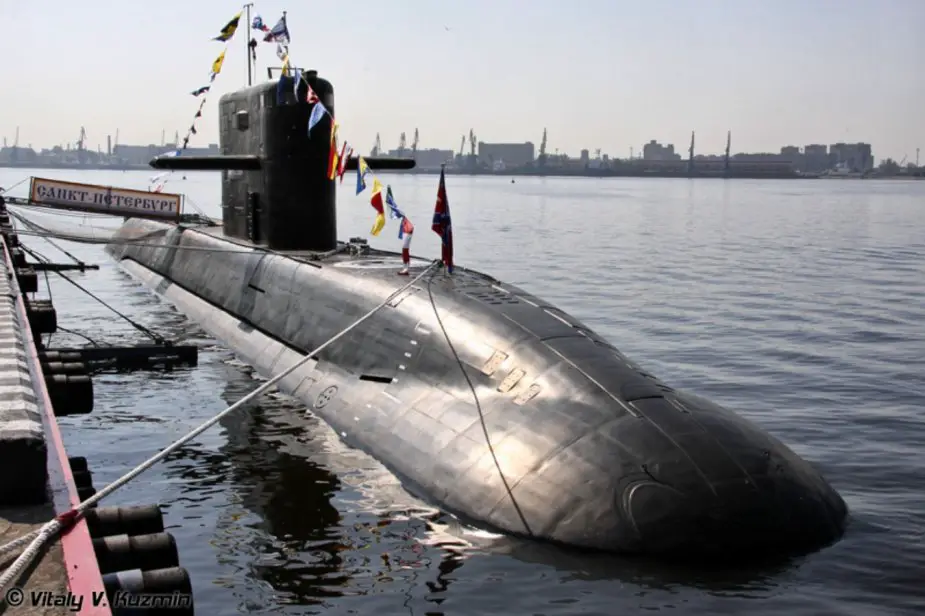The St. Petersburg B-585 Lada-class diesel-electric submarine of project 677 is undergoing test operation and sailed out of Severomorsk to Kronshtadt for scheduled maintenance and upgrade, the Northern fleet said in early April. The sailing of the most noiseless submarine to the Baltic Sea will weaken the defense of Northern fleet SSBN when they sail out to the World Ocean and return back home, the Independent Military Review writes.
 St. Petersburg B-585 Lada-class diesel-electric submarine (Picture source: Wikipedia)
St. Petersburg B-585 Lada-class diesel-electric submarine (Picture source: Wikipedia)
The St. Petersburg sailed to the north covertly underwater to see whether NATO antisubmarine forces can detect it. On the way back, it sailed in a surfaced position in the company of auxiliary vessels. The submarine left the Kola Peninsula in the company of the Pamir rescue tug. The Nikolai Chiker tug later joined it.
It was no sensation that the submarine sailed in a surfaced position. It was done to deny the adversary a chance to take the acoustic underwater portrait of the submarine. The surface portrait is of no major value. The crew trained navigation and checked the equipment during the two-week voyage.
The overhaul is likely to be done by Kronshtadt Shipyard together with experts from Rubin Design Bureau and the Admiralty Shipyard. It is impossible to do the work at the producer shipyard, as it is fully loaded with new submarines of projects 636.3 and 677 for the Pacific and Northern fleets.
As a rule, third-generation submarines have a life cycle of 25 years on condition of restorative overhaul at least once in ten years (it usually takes two-three years).
The St. Petersburg was floated in 2004 and joined the Navy six years later and began test operations. An overhaul has long matured, but the Navy wanted to hold a maximum of tests before the break to expose all drawbacks and rectify them in all the submarines of the project.
The overhaul begins with a thorough inspection in the dock. In the Baltic Sea, B-585 was in the dock when necessary and sometimes returned to the producer shipyard for improvements. The northern infrastructure is less developed than in the Baltic Sea, while a bigger number of warships is deployed there. The latest submarine acquired operational statistics in seven years in the Barents Sea and a list of malfunctions was compiled. It is reasonable to rectify them in a shipyard close to the design bureau and the producer enterprise.
Until recently, project 677 has been criticized for non-serial equipment with numerous single prototypes. Some of them have broken down and others exhausted the resource and are worn our morally and physically. The St. Petersburg needs a major overhaul which can take several years. The submarine has equipment which remained operative and can be installed in new warships and thus accelerate their construction.
The Navy needs advanced ships, such as project 667 diesel-electric submarines, to oppose adversary SSN. Even the operation of a single submarine is important, as it changes the balance of forces in the standoff with the potential adversary.
© Copyright 2020 TASS. All rights reserved. This material may not be published, broadcast, rewritten or redistributed.



